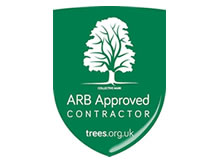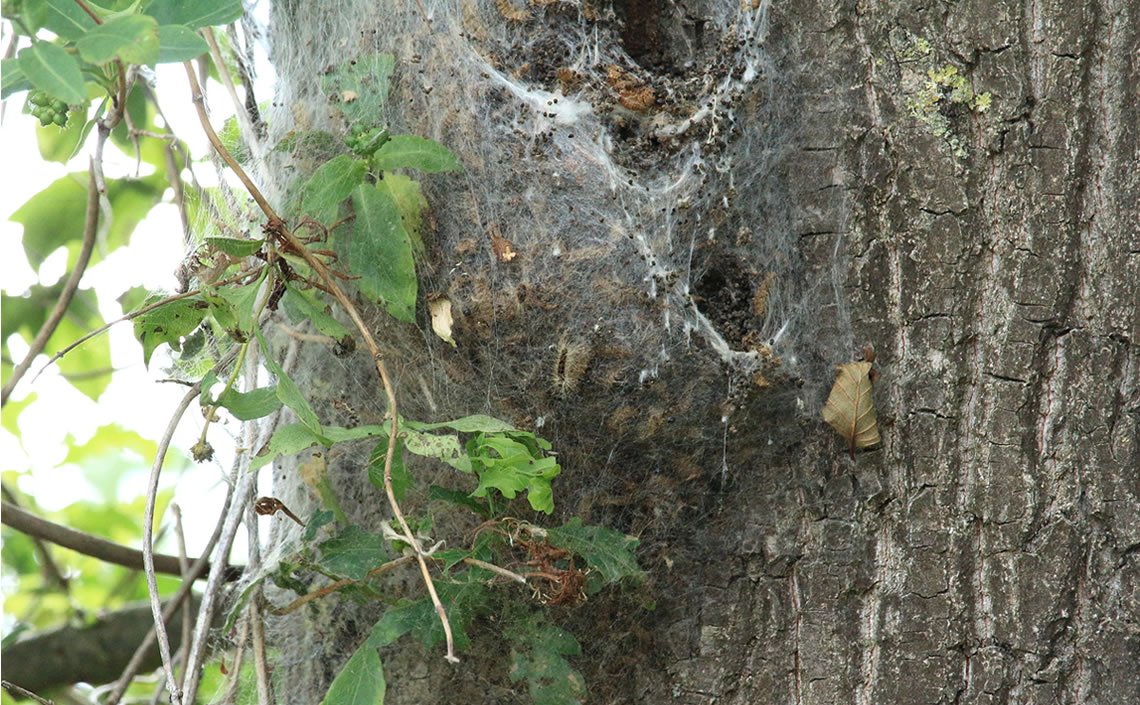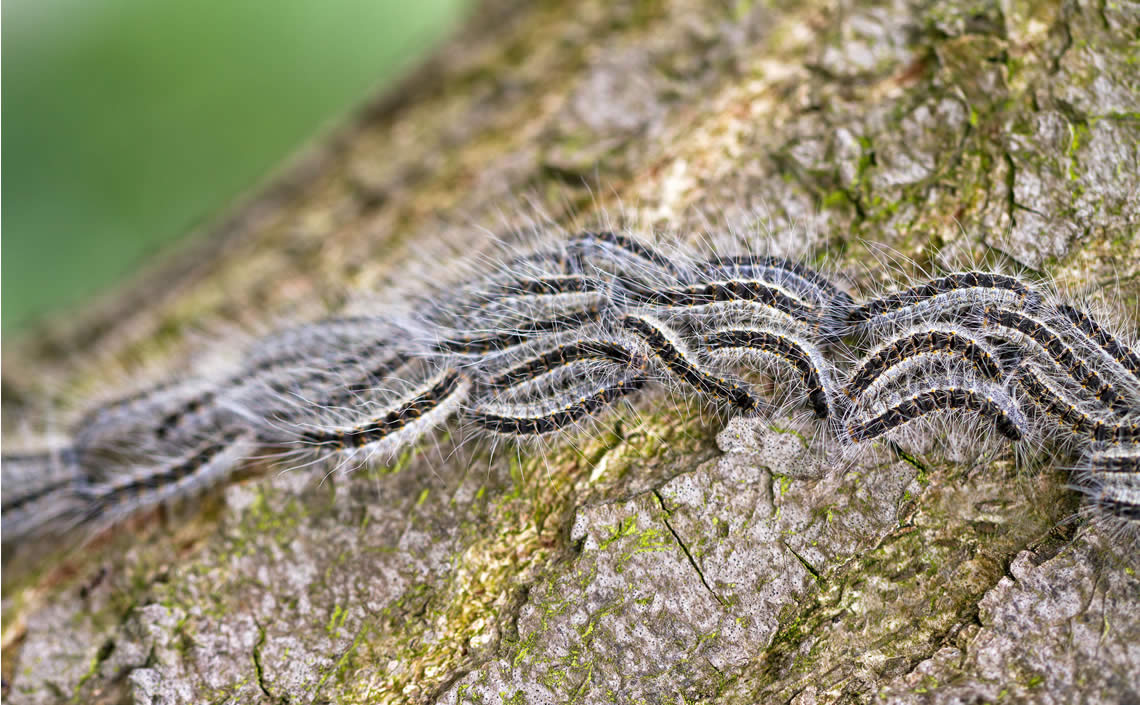What is Oak Processionary Moth?
Oak Processionary Moth larvae (caterpillars) are a hazardous pest that affect Oak trees. It was first identified in the UK in 2005 and whilst it is most prevalent in London and surrounding areas, it is spreading and is likely to infect many more areas.
The larvae are a hazard to both human and animal health, and a threat to Oak tree species.
What do Oak Processionary Moths look like?
Oak Processionary Moths themselves are brown moths, and are not hazardous, however their larvae (caterpillars) are.
As the name suggests, the caterpillars move around a tree in a nose-to-tail procession. There is usually a leader, with a following which can be several rows of caterpillars wide.
They have a grey body, dark head and distinctive long, white hairs. Older caterpillars can have a central dark stripe, with paler stripes either side.
You may also spot an OPM nest with no presence of caterpillars. The nests are made of white, silken webbing and are built early in Summer. They will usually be made on trunks or branches, however these can fall from the trunk so may be visible on the ground.
Call us today to speak to one of our friendly staff about Oak Processionary Moth .
Call TodayWhat are the hazards?
Contact with OPM caterpillars hair can result in;
- Eye irritation
- Skin rashes that can be itchy
- Sore throat
- Breathing difficulties
If you are worried that you have come into contact with OPM nests or caterpillars, see a pharmacist for relief from skin or eye irritations.
If you think you or someone in your care has had a serious allergic reaction call NHS111 or see a doctor - tell the doctor you suspect OPM contact.
Consult a veterinary surgeon if you think your pet or livestock has been seriously affected - tell the vet you suspect OPM contact.
What do I need to do if I think my tree is infected?
In accordance with government guidelines, if you suspect you have found an OPM nest or caterpillars:
- do not touch or approach OPM nests or caterpillars;
- do not let children or animals touch or approach nests or caterpillars;
- do not try removing nests or caterpillars yourself; and
- avoid or minimise time spent under or downwind of infested oak trees, especially on windy days in summer.
All sightings should be recorded immediately to https://treealert.forestresearch.gov.uk/
Frequently asked questions















